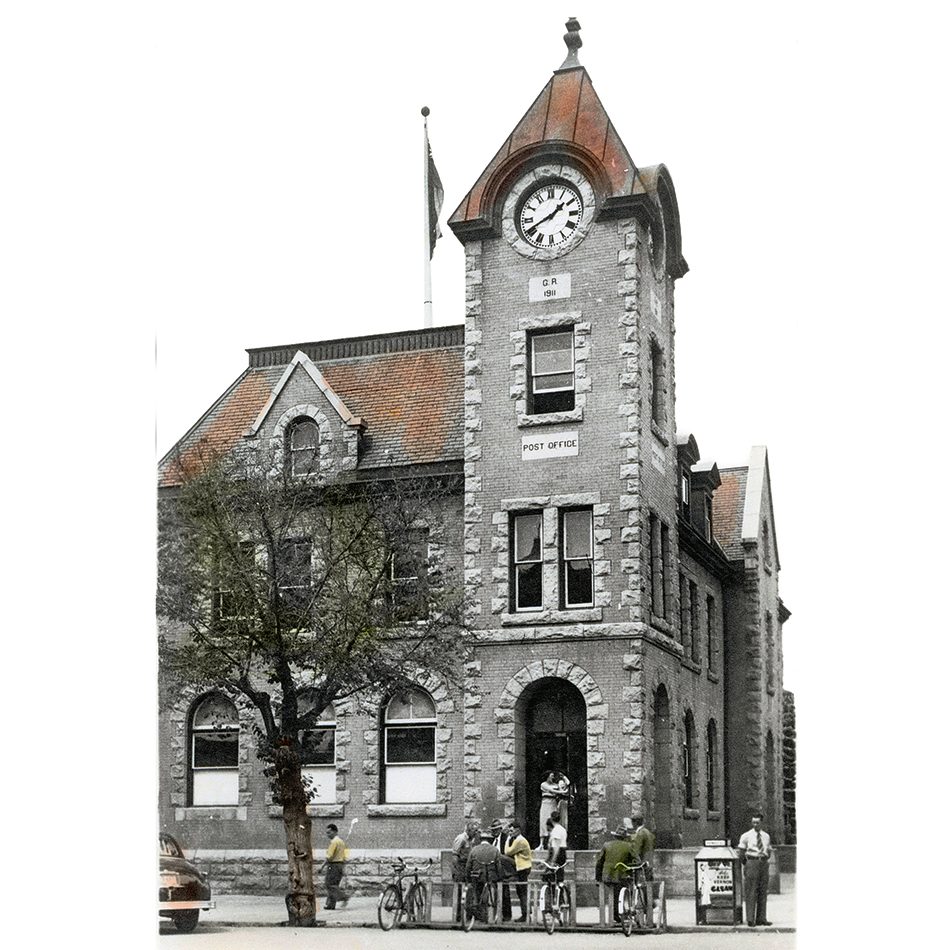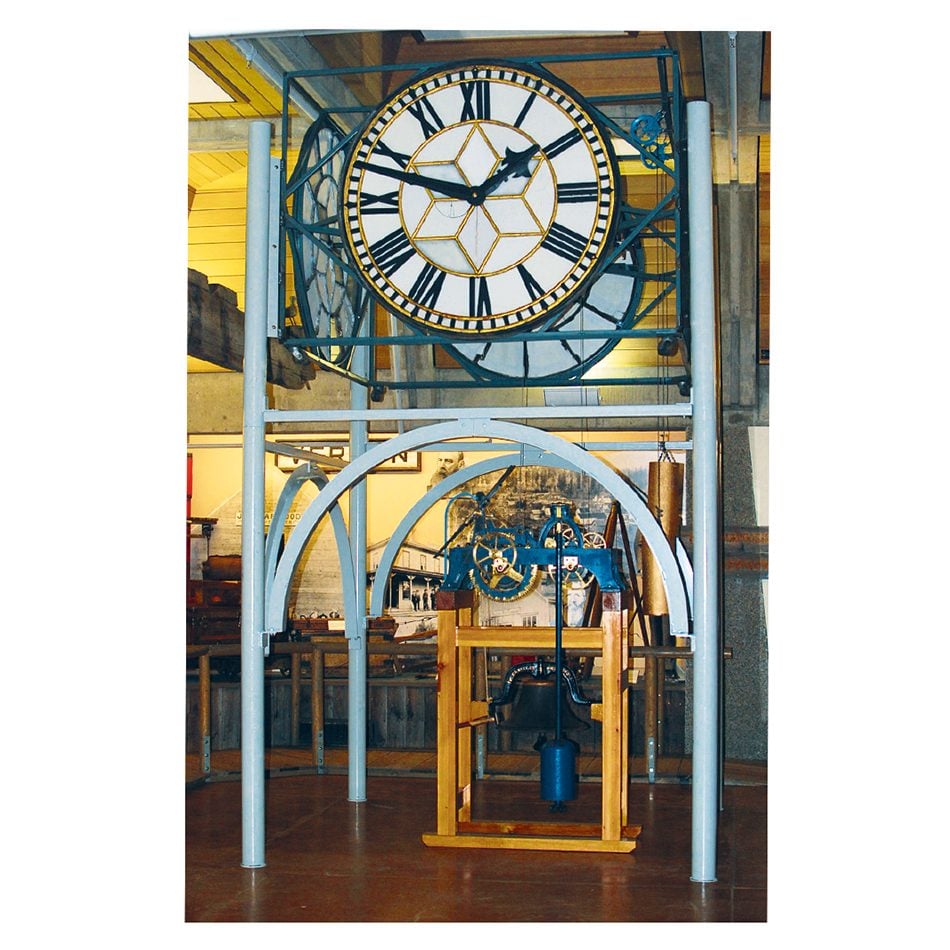
The History of the Vernon, B.C., Post Office Clock
A long, long time ago—in 1912 to be precise—the local post office building was all but completely built on the corner of 30th Street and 30th Avenue in Vernon, B.C. The granite blocks for the building were quarried at Ellison Park, on Okanagan Lake, barged to Paddlewheel Park, and then to Okanagan Landing, and brought into Vernon on a railcar.
The only part that was missing was the clock that was supposed to sit at the top of the structure. The clock was bought from the clockmaking company, Smith & Sons, in Derby, England. Placing an order for a clock in 1912 was quite a long process. You would have to write a letter that would travel across Canada by train and then on a steamship to England in order for it to reach the clockmakers. And, of course, when the clock was shipped, the reverse would have to happen. This was during the time of no cell phones or air freight, which is why it took more than a year for the clock to arrive and be installed in 1913.
During that time, these town clocks provided a very important service to the community. The average person did not carry a timepiece or pocket watch around with them and therefore, town clocks provided synchronization for children going to school and for people going to work or taking breaks. The bell chimed on the hour and could be heard for many miles.
In 1959, the post office moved its location after the building was deemed too small, and it was soon torn down.
At the time, I thought the demolition of the building was a huge mistake. I was eight years old and lived nearby. I heard the noises of the crane and the wrecking ball and went over to watch the destruction.
The clock was removed and reportedly saved by the owner of the Allison Hotel. One night the basement of the hotel caught on fire. The story goes that the owner was seen running away from the hotel with a can of gasoline; however, he was never charged for the crime.
Luckily, the old post office clock was not harmed in the fire. The dials, the clock faces and the electric motor were then mounted on top of a wooden tower on the corner of 31st Street and 32nd Avenue, while the original clockworks were moved to the historic O’Keefe Ranch.

The Post Office Clock Today
By 2010, the electric motor from the clock tower had worn out, and it was deemed irreparable. A new clock was installed and the original parts from the tower and the O’Keefe Ranch were donated to the Vernon Museum and Archives.
An article in the local Vernon paper said that the city could not find anyone to fix the clock, at which point I stepped up to the challenge and said I would rebuild it.
Many companies and individuals were very cooperative and donated funds for the clock’s restoration project. I was able to find a machinist in Duncan, B.C., who was able to give me drawings of the parts I was missing. Those parts included the gears, shaft and the bracket of the clock.
I was able to build those parts again but the last piece of the puzzle I was missing, which had been thrown out at some point at the O’Keefe Ranch, was the pendulum.
I decided to email Smith & Sons, requesting drawings of the parts of the clock and asking if they were available to purchase. I received an email back from J. Scully with the brief line, “no parts available, good luck, make your own.”
I did not like this answer. On the return email there was a phone number and I used it to call Mr. Scully. On the phone, he repeated what he said above—no parts could be made available. I then informed him that the piece I really needed was the pendulum.
His reply: “Why didn’t you say so? I have two in stock.” This information made me very happy.
The cost for the pendulum was $300 but with shipping, the total cost turned out to be $800. The pendulum weighs 125 pounds and is five feet long, hence the high shipping cost.
So now in Vernon, B.C., as of 2012, we have a restored original clock in a skeleton configuration, which can be publicly viewed in our local museum (above).
Thank you to Smith & Sons for making such a fine clock. And thanks to J. Scully for helping us out.
Next, check out the story behind a Canadian landmark that sadly no longer exists—Victoria’s Blue Bridge.